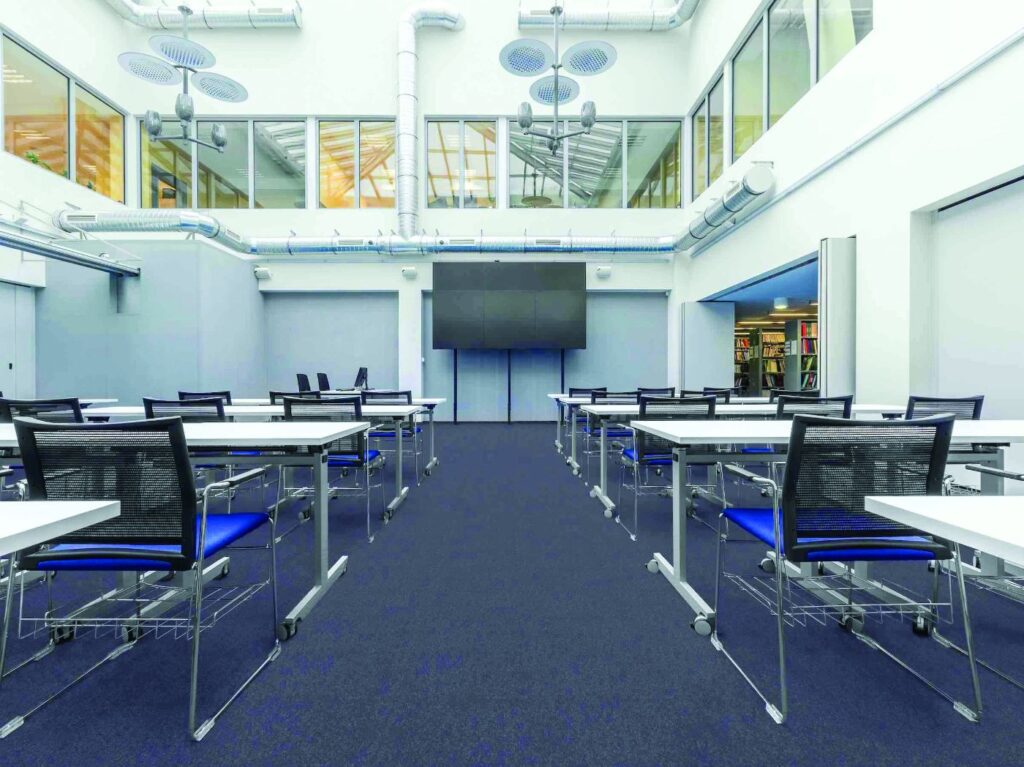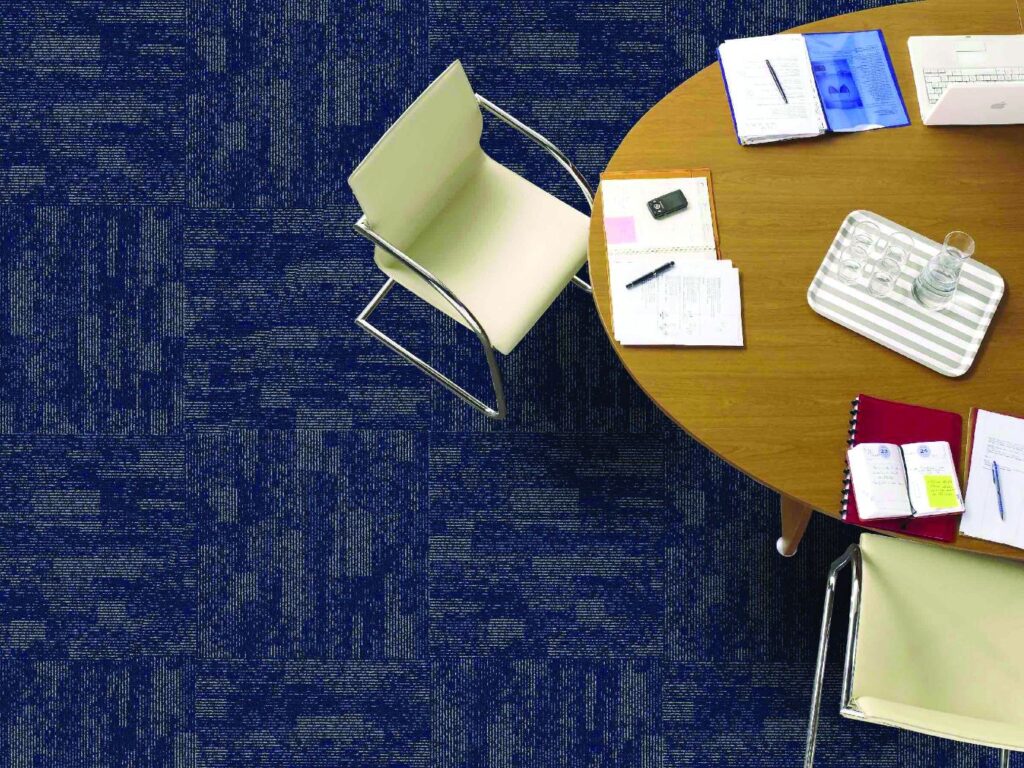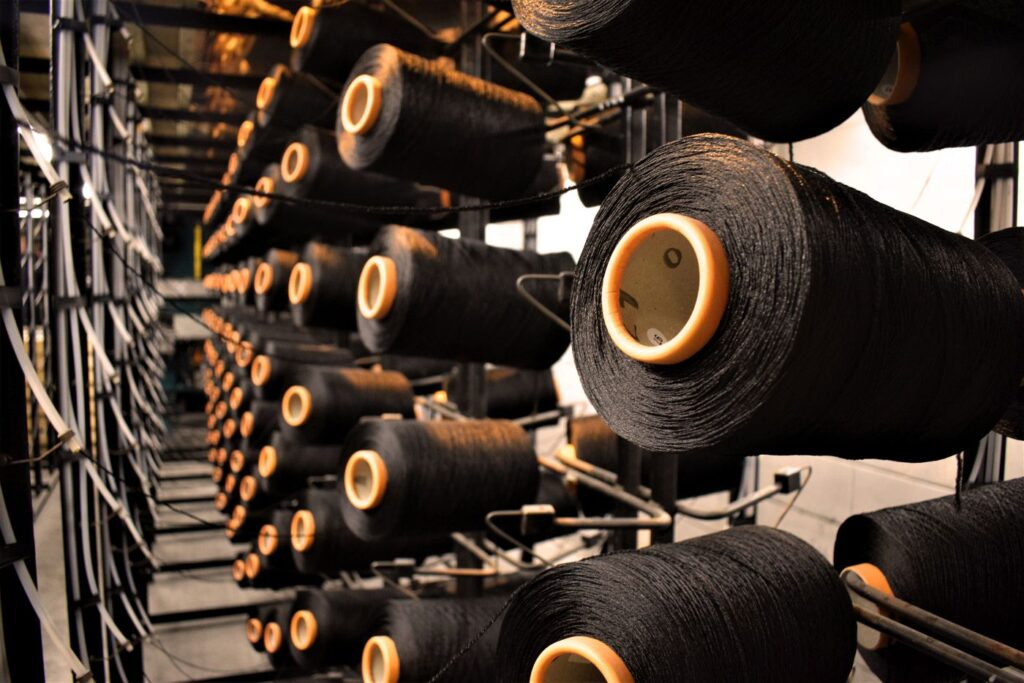Why is indoor air quality important?
Here’s an industry secret: there is no single formula for the perfect working environment. Many things contribute to the health and wellbeing of employees in a workplace. These include customer relations, stress management, welfare support and company wellbeing initiatives. An optimal working environment prioritises communication, productivity and individual comfort, where colleagues can share ideas without stress or judgement in order to effectively meet targets.
Furthermore, an environment in which the personal growth of employees is a priority will always outperform a company culture that focuses only on end goals, instead of the journey undertaken to get there.
Therefore, support plays a big part in creating the ideal working environment. If employees are unsure of something, they need to be able to easily ask relevant questions and receive beneficial advice. Support becomes difficult to implement in a hectic office space because workers need physical and mental space to access the support they need.

This is one reason why design is so crucial in providing a functional working environment that fosters employee growth and company excellence.
Firstly, it is vital that office spaces look attractive and provide inspiration to employees. After all, nobody does their best work in a dull, uninspiring environment.
However, the most important consideration when designing an office space is human behaviour. Any corporate environment has to be designed in a way that functions practically for the people that use it every day. Practicality includes workflow optimisation, comfort, mental wellbeing and access to resources.
Now that workers are returning to offices around the country in the wake of the pandemic, most of us are spending more and more time in the office again. After being at home for the best part of two years, emerging corporate design trends are focused on how to make corporate spaces feel more homely. Some of the main things workers liked about working from home were the comfort aspect, the peace and quiet, and the flexibility. It’s no wonder that these considerations are now being prioritised by professionals who are designing corporate environments.
Sustainability is also a big consideration when designing corporate spaces going into 2022, as office layouts created now are expected to last for years to come. There is a big focus on production being environmentally conscious from beginning to end. This includes eco-friendly materials, manufacturing processes, construction, right through to building maintenance and everyday office habits.
Why is noise important?
According to Julian Treasure from The Sound Agency, irritating noise can come from many places in an office environment: air conditioning, obnoxious ringtones, traffic, nearby construction, unsophisticated sound-masking systems and other people’s voices.
Indeed, other people’s conversations can often be the most negatively impacting source of noise at work. Treasure goes on to explain that the human brain has the capacity to take in roughly 1.6 conversations at a time. This means that for every minute spent overhearing one conversation in the office, you only have 0.6 of bandwidth left to listen to your own thoughts. If you are overhearing 2, or even 3 conversations at a time, which many of us do regularly in the office, your brain has no extra space to process what you are meant to be focusing on.
On a basic level, a noisy workplace can cause stress and annoyance, counteracting initiatives designed to boost happiness and productivity. This is bad enough and can completely undermine existing cultural or design initiatives that are intended to boost employee wellbeing.
What’s more, many people don’t realise that excess noise can also cause lasting concerns outside of work that can significantly impact people’s mental health. Indeed, a recent study published by the L.D College of Engineering found that exposure to excess noise pollution, which includes everything from crowds to traffic noise, can lead to lack of sleep, high levels of stress and an increase in anti-social behaviour. This can affect an employee’s private life and sense of self, not to mention impact their motivation and ability to focus on the task at hand.
How much noise is too much?
There is no simple answer to this, and the recommendation for noise levels in a working environment varies from country to country. In Germany, for example, 70 decibels is listed as an acceptable standard for transactional work, but for work that demands excess concentration, creativity or decision making, the recommendation is 55 decibels.
To put this into perspective, a busy highway is measured at around 80 decibels, and 50 decibels is the noise level of a quiet suburb. In the average open plan office, noise can range from 60-65 decibels. 60 decibels is the level of normal conversation, or background music, which is a standard level of office noise.
But add a noisy air conditioning unit, someone on the phone and a constantly buzzing intercom and the noise level is easily above 70 decibels, which is above the level recommended for intense concentration.
How do acoustics fit in?
Acoustics is defined as ‘the properties or qualities of a room or building that determine how sound is transmitted.’ Designers can use different materials and innovative office layouts to create a working environment that is sound absorbent, yet open plan enough that colleagues can communicate across the space.
The key aspect of noise pollution that acoustic initiatives target is the reverberations of a sound wave. The reverberation time of a sound is the time needed for a sound to diminish 60 decibels and is reached in seconds. The reverberation time can be adjusted and balanced by the amount of absorptive materials in a space.
Therefore, when designing a commercial space, it is best practice for professionals to consider what activities will take place there and how noisy they will be. That way, they can choose materials that will absorb the right level of noise to adequately offset the excess pollution and maintain a happy and healthy working environment.
Does flooring matter?
The short answer is, yes. Flooring often goes unnoticed on a busy day in the office, (it is literally under our feet all day). But the right flooring choice forms the backbone of any sound-absorbent space. If a large space has plush cushions and curtains, that won’t make any difference when the whole square meterage of the floor doesn’t absorb any reverberations produced.
When it comes to acoustics, carpet is by far the most sound-absorbent flooring option. Hardwood and laminate flooring can’t control reverberations, as sound bounces off instead of being absorbed. Carpet, on the other hand, is extremely good at controlling reverberations because the individual fibres and backing that make up its texture have different resonant frequencies at which they absorb sound. According to the American Society of Interior Designers, carpets are 10 times more efficient in reducing sound than any other flooring type. In fact, experts believe that standard carpets can reduce sound in a room by up to 35%!
In addition to absorbing verbal noise, carpet is also very effective at minimising surface noise, which is the sound produced from footsteps, dropped objects and furniture movement. Bare tile floors produce 7-12 times more surface noise than carpets, which cushion the impact of the noise, absorbing and deadening the sound. This is ideal in a busy workplace environment where people are constantly getting up to move things, dropping stationery and moving chairs across the floor.

Which type of carpet is the most sound-absorbent?
All carpets are very good at absorbing and dispersing sound waves because they are made up of densely packed fibres. The pockets in between fibres trap air molecules and keep them from being able to vibrate freely. Thanks to this, sounds are dampened because the air molecules are restricted from vibrating.
In general, density is your best friend, as the more tightly packed the material, the more reverberations it will disperse. Dense carpets are usually the best for absorbing sound due to the thick fibres. Cut pile carpets and carpet tiles also fall into this category.
But it is not only the type of carpet that contributes to how well it absorbs sound. Advances in production mean that backing or underlay is one of the most important factors that influence how soundproof a carpet is. The backing is applied to a carpet or carpet tile in the final step before it is sent out to customers. There are many types of backing, including mass loaded vinyl which is thin but very dense. Other flooring insulation options such as sound deadening floor insulation sit under the carpet, around the floor joists, functioning like a stud wall to prevent sound from echoing.
But, the most effective form of backing is soundproof carpet underlay, which sticks to the back of the fibres and is specially designed to make the surface as absorptive as possible.
How Paragon Carpet Tiles are manufactured with acoustics in mind
When it comes to acoustics, Paragon Carpet Tiles go above and beyond to consider soundproofing in every stage of the manufacturing process, from receiving shipments of fibres, to applying our bespoke, dual-level acoustic backing.
The first step is choosing the yarn that is turned into carpet tiles. We use polypropylene or Nylon BCF yarns, in a tufting process that forms the carpet’s textured surfacing. During this process, the fibres are interlocked to maximise the number of reverberations the final product can absorb.
Next, we use Envirobase (bitumen-based backing). This is manufactured with the environment in mind, with a minimum of 75% recycled materials. It is designed to reduce sound impact and absorb noise, and also improves the thermal insulation of the final product. It gives the final product stability, mass and contributes even further to the density.
Then we attach the second layer of backing, Komfort Bac, which is optional and improves the acoustics even more. Komfort Bac is a manufactured Polypropylene/Polyester felt material of 1,000gsm and a 6mm thickness. This gives an extra layer of cushioning to the floorcovering and helps to improve the workplace environment by increasing the flooring impact sound absorption properties. This helps to reduce stress caused by noise pollution and also gives a more comfortable walking and standing experience which in turn helps to reduce fatigue.
Komfort Bac is industry-leading and has been developed to reduce the number of manufactured components, it has the thickness of a standard carpet tile with twice the acoustic and comfort benefits.
Paragon Carpet Tiles are revolutionary in providing the highest level of acoustic absorption, whilst still being incredibly easy to fit.
What to look out for when choosing acoustic-friendly flooring options
The first thing to look out for in the UK is the BS EN ISO 140-8 rating, which measures how good a building material is at absorbing sound. Paragon Carpet Tiles has an excellent rating, and we continually test our ranges to make sure that they are going above and beyond industry standards of acoustic quality.
The other things to look out for include Sound Transmission Class (STC). This is a numeric rating applied to products to show how good they are at soundproofing. The higher the number, the better the product is at attenuating noise. Impact Insulation Class (ITC) shows how good the flooring material is at reducing this impact noise, and again the higher the number the better.
Looking into the future of corporate flooring design, comfort and quality will be the priorities as we head into 2022. Employees that have returned to the office want flexibility and a space that reflects the best parts of working from home. A sound absorbent, comfortable and hard-wearing flooring option, maybe even one that provides an element of luxury, is the perfect way to do this.
It is worth bearing in mind that with carpet tiles, different ranges and styles can be mixed and matched to create exciting designs. This also enables you to provide the most sound insulation in places that will be the noisiest and places that require the most concentration. Stairs and walkways, for example, need to be heavily sound absorbent, but also hard wearing as they receive a high daily footfall.
A product like our Workspace Loop carpet tiles with acoustic backing would be a great choice. A conference room on the other hand doesn’t necessarily receive a high footfall but does need to be heavily insulated to allow for quieter conversations and increased concentration in meetings. Therefore a more luxurious product like our cut pile carpet tiles installed over a smaller surface area would be a great fit.
In summary, the acoustics are an unseen aspect of office life that most employees never think about. But they are crucial in maintaining a productive, calm and invigorating corporate environment. Not only does a sound-absorbent space reduce stress and allow people to focus on their work, but it also improves colleague relationships and encourages positive communication in the workplace.
When people can hear one another and themselves clearly, they are more likely to pay attention to the conversation, as opposed to trying and failing to listen to someone in an overcrowded noisy space.
It is vital that designers and architects choose corporate building materials and furnishings with employee productivity in mind, and look out for the acoustic ratings on products. If sound absorption can be a priority at every level of office design, then the final result can be seemingly effortless noise reduction, without having to install extra insulation.
So if a building requires a full renovation, or just upkeep and maintenance, sound-absorbent carpet tiles are an ideal flooring option to consider. Carpets that are designed to reduce sound impact and background noise can be a great way to futureproof the space with a small investment. After all, recent design trends are all leaning towards high-quality products that will stand the test of time instead of new fads and fashions that will need to be changed every few years.
This also leads into the current sustainable design movement, where professionals are looking to incorporate practicality with environmentally friendly choices. Our carpet tiles are a perfect example of this: not only do we use fibres and Envirobase backing made from recycled materials, but they are also designed to absorb as much sound as possible in high footfall areas.
Paragon Carpet Tiles is one of the UK’s leading carpet tile manufacturers, at the forefront of industry breakthroughs in environmental and technological design.
Paragon Carpet Tiles
017097 63800
sales@paragon-carpets.co.uk
www.paragon-carpets.co.uk
















